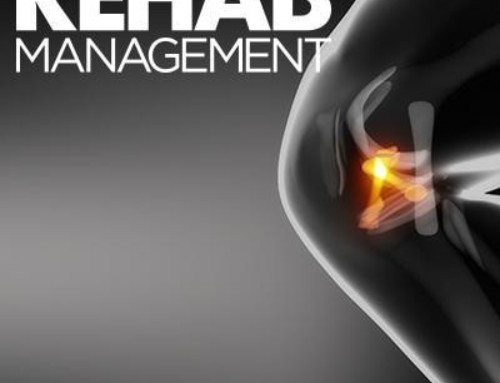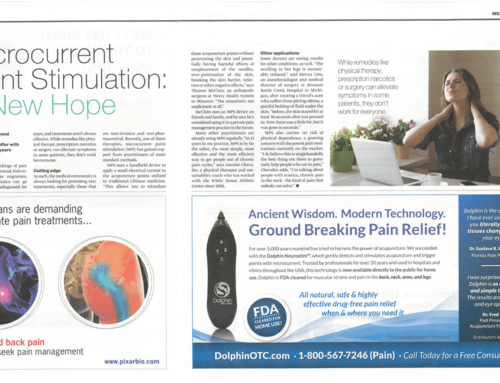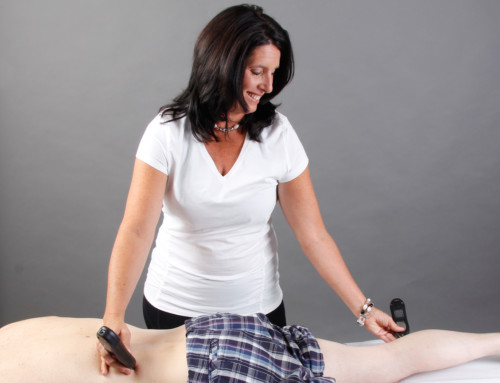Pain is the subjective complaint our patients have. As physical therapists, we are asked to evaluate pain levels between zero and ten. Payers require us to record patient’s pain levels with every visit. It is important enough to warrant documentation.
Unfortunately, in the opinion of the authors, understanding and dealing with complex or even general pain disorders is something PT schools do not adequately prepare us for. There is no course entitled “Pain Management 101.” If pain was ever discussed, it was in passing and often related to the pharmacological aspect that our “medical experts” have provided us. How can PTs be expected to deal with patient’s acute, sub-acute or chronic pain with such limited understanding of the subject? We are often taught how to treat the diagnosis/symptoms, but not necessarily how to treat the patient or how to determine the patho-physiological root cause of pain. We cannot help feel a sense of dissatisfaction because many pain patients don’t seem to get better with the therapeutic exercises we prescribe and the “standard modalities” we now employ. Physicians keep sending these patients back for continued physical therapy, until the physician, therapist and patient are completely frustrated. What is a therapist supposed to do?
Evidence-Based Medicine for Pain Management
In searching the world for answers, The Cochrane Collaboration, a not-for-profit evidence based medicine (EBM) database (1), provides some clearer answers. In reviewing 26 modalities in effectiveness that are currently being employed to treat lower back pain around the world, the number one modality for pain management was acupuncture, with “beneficial effects”, beating out such procedures as trigger point injections, thermal therapy and TENS. Ultrasound was placed dead last on the list for efficacy with “questionable or unknown effectiveness.” (2)
Further investigating acupuncture and physical therapy, a review on PubMed, the NIH search engine, reveals over 5,000 EBM research papers on physical therapy/acupuncture. There even exists an International Acupuncture Society of Physical Therapists that encourages traditional physical therapists to train in acupuncture.
The main difference between the treatment of acupuncture points and trigger points is their location. Acupuncture treats the whole patient, not just the local pathology. So, acupuncture shoulder protocols include points located on the feet and lower limbs, as well as, local treatment points surrounding the injury. Since physical therapists already have a good working knowledge of trigger points, and with 93% of trigger points correlating to acupuncture points (3), the integration of acupuncture techniques into the physical therapy setting is usually much easier than anticipated.
Despite the overwhelming evidence, widespread practice, and ease of integration, why is the subject of acupuncture rarely discussed in U.S. physical therapy journals, schools or conferences? We believe one reason for the frustration in patient pain management may be the choice of modalities.
MPS Therapy and Acupuncture
Microcurrent Point Stimulation (MPS) is a new Food and Drug Administration approved device/therapy that combines the principles of acupuncture and modern neurology with microcurrent stimulation. MPS is successfully helping many physical therapists control their patient pain levels and improve outcomes. Its use has helped me to expand my practice through increased patient referrals.
For each pain condition, MPS therapy applies concentrated (DC) micro-stimulation to a predetermined series of acupuncture points that isolate specific nerves, muscles and tissues that are involved with the injury. Applied by point stimulator, MPS current produces an acupuncture-like response. This response is thought to permit increased reinnervation of neural pathways, (connecting the energy meridians in acupuncture), allowing patient pain levels to be substantially decreased, often immediately.
Why DC Micro-Stimulation?
Dr. Robert Becker, orthopedic surgeon, researcher and the father of osteogenesis documented in his book, The Body Electric, “the perineural cells or nerve sheaths carry a direct current of electricity, prompting the body to grow, heal, regenerate and repair itself. No subsequent healing of any injury may occur without DC stimulation.” (4)
Dr. Bruce Pomeranz, father of neuro-endocrinology and the scientist who discovered endorphins (the body’s natural opiates), found that low frequency DC stimulation (2-4 Hz square wave – MPS stimulation) can produce the same endorphin releasing effect as traditional needle acupuncture. This discovery led to the ability of non-acupuncturists, such as PTs, to easily integrate this modality into any clinical setting.
Evidence is Coming In
A Florida Hospital study, comparing 2 standardized patient groups (n=86), one group applying TENS and the other MPS produced some surprising results: The MPS group had significantly greater reduction in pain (83% vs 48%) than the traditional modality group. “MPS is a highly effective modality when combined with traditional physical therapy”, says Mitch Fried, MD, Director of Rehabilitation at the study site. (5)
The true benefit of MPS seems to be the ability to quickly apply the modality in any clinical setting by itself, or while performing exercises and simple contract-release or strain–counter strain techniques. This integration of acupuncture during manual therapy permits PTs to determine how a patient’s overall body mechanics and nerve entrapment manifestations are integrated with acupuncture/trigger points to produce protocols specific to the patient’s pain needs.
Finally, MPS is instructed through continuing education courses across the USA, and MPS is CPT reimbursable. Medicare, TriCare and extended health insurance will reimburse for patient home units.
By Zali Levin, RPT and Laine Miller, LPTA, AS
Originally published in Impact, April 2010
References:
1 Cochrane Collaboration, Cochrane library: www.cochrane.org
2 Bill McCarberg and Gladstone McDowell II, Pain Medicine News Special Edition, Vol. 6 /Number 9, (December 2008), PainMedicineNews.com, P. 105, table 3.
3 P.T. Dorsher and J. Fleckenstein, “Trigger Points and Classical Acupuncture Points: Part 1: Qualitative and Quantitative Correspondences,” Deutsche Zeitschrift fur Akupunktur, Vol. 51, Issue 3 (2008), pp. 15-24
4 R. Becker, The Body Electric 1985, (page 106, 183).
5 Rehab Report Vol. 2, Issue 2, Summer 2005: An independent non-published internal study
Suggested Readings:
A. Jayasuriya, Clinical Acupuncture
G. Stux, B. Pomeranz, Acupuncture’s Scientific Basis
R. Becker, The Body Electric
R Weiner, Pain Management, A Practical Guide for Clinicians, 6th edition, 2002: Chapter 54
Zali Levin, RPT, is the owner and director of Back in Action Physical Therapy in Broward County, FL. He can be reached at biacoconutcreek@bellsouth.net
Laine Miller, LPTA, AS, is an outpatient rehabilitation physical therapist assistant. She can be reached at lainekmiller@bellsouth.net







February 2, 2016
Acumed Medical Supply Ltd.
c/o Dolphin Neurostim OTC
Etobicoke, ON
Canada
Human Resources.
Careers.
Dear Sirs/Madame:
I am inquiring about any current positions with your Company in the Office Industry. I am very interested, as I was on your Website to learn more about you. One of the information references I read about was the Article with reference to Fybromyalgia – Three types of pain. I continue to be further interested whereas my office skills could also include in my application.
If you have any related positions, could I add My name to the Applications Contact List? Should any other upcoming positions become available my Application be kept Active. I look forward to hearing from you.
Awaiting your reply, Thank you.
Yours truly,
Garyfalia Tzanis.
Please email your inquiry to info@dolphinmps.com